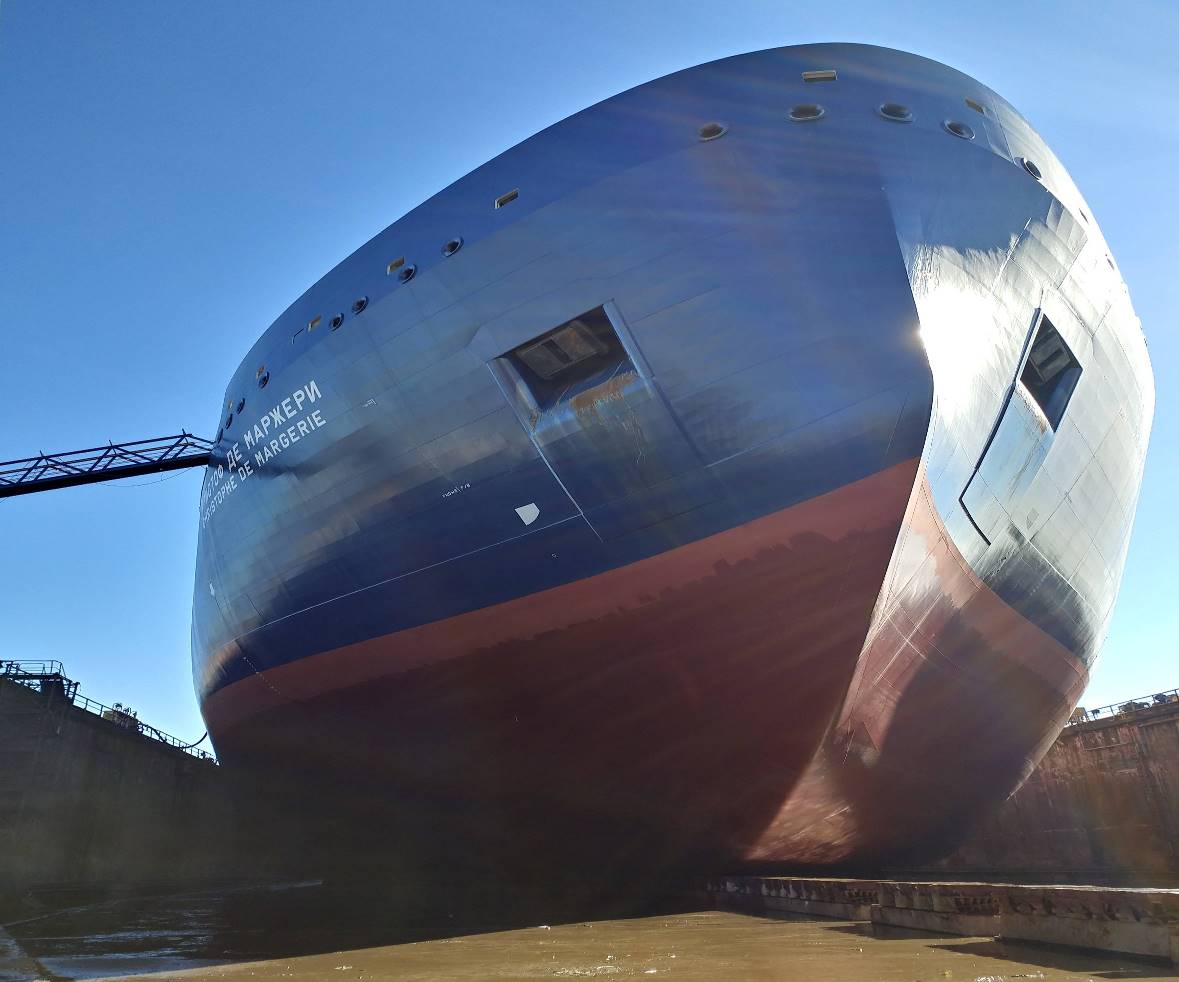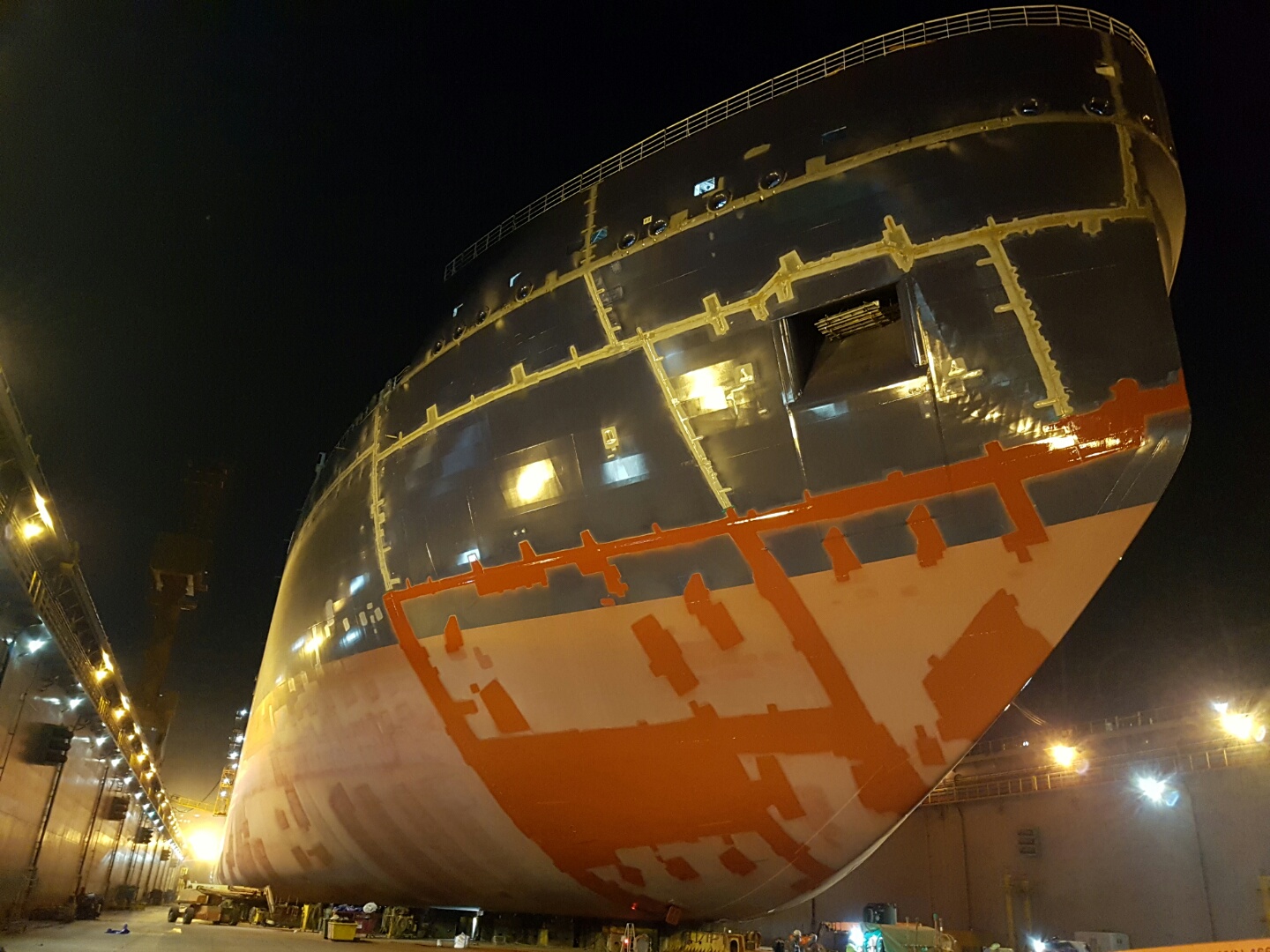Fifteen ice-class LNG carriers will soon test Arctic coatings under the most challenging conditions that ships of this type have ever faced.
The ships, built at Daewoo Shipbuilding & Marine Engineering (DSME) in South Korea, are billed as the world’s largest icebreakers. Deployed on long-term charter to Yamal LNG, they will be among the first commercial ships to sail the northern sea route through the Russian Arctic from the Kara Sea, past Siberia, to the Bering Strait.
The first 172,600m³ ship, Christophe de Margerie, left DSME bound for Murmansk earlier this year and successfully completed its sea trials. These ships are remarkable in design terms, operating without assistance through some of the world’s thickest navigable ice.

Courtesy of DSME
Protecting ships and equipment operating in these conditions presents a challenge for coatings manufacturers. The Arctic’s delicate ecosystem makes operations in this region complex. This is compounded by severe cold, deep water, large waves, remote locations, ice drifts, long winter nights and freezing sea spray. Icebreaking ships must also be protected from ice abrasion.
Ships and floating structures in Arctic regions rely heavily on their coatings selection; expenditure on correct paint materials in the first instance will save millions of dollars in the long run. AkzoNobel’s abrasion-resistant Intershield 163 Inerta 160, part of International® range of marine coatings, was selected to protect these vessels.
Abrasion and corrosion
The choice of coatings matters, as the effects of ice can be disastrous. A vessel trading in multi-year ice or first-year ice encounters huge forces of impact and abrasion. If ice abrasion removes the paint, this exposes the bare steel to rapid corrosion.
However, there are specialist coatings, formulated to withstand ice abrasion. These require specific film properties and application conditions to achieve their anti-ice abrasion characteristics. Class societies recognise these properties and can give allowances to reduce steel scantling thickness if these coatings are used, making the vessels lighter and more fuel-efficient.
Field measurements show that these low-friction coatings retain their smooth surfaces even when moving through heavy ice.
The formulation of Intershield163 Inerta 160 has not changed since it was first introduced to the market more than four decades ago. This high-solids, two-pack epoxy abrasion-resistant coating has a low volatile organic compound content. It has low frictional resistance and is designed for ships operating in temperatures as low as -50ᴼC.

Courtesy of DSME
The coating provides corrosion protection, controls hull roughness and can be applied to newbuildings or to older vessels undergoing maintenance and repair.
The LNG carriers operating for Yamal LNG will not need antifouling protection, due to their high latitude trading routes and low temperature operation.
As these pioneering new vessels venture into new waters, what matters most is to protect both the fragile ecosystems they encounter and the ships’ crew. Coatings manufacturers play a critical role, providing the protection and security to enable a new generation of LNG carriers to navigate the Arctic.
By: Kim HJ (Regional Marketing Manager for Korea & Japan)
Contact us

We are here to help
Speak with one of our experts to discuss how we can get the best results for your area of application.



